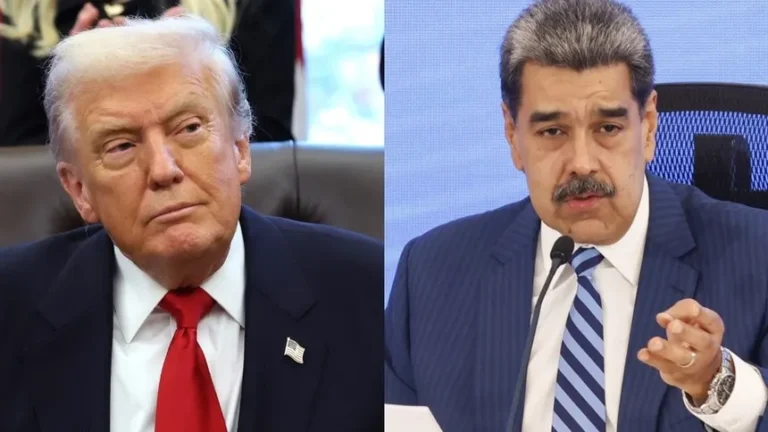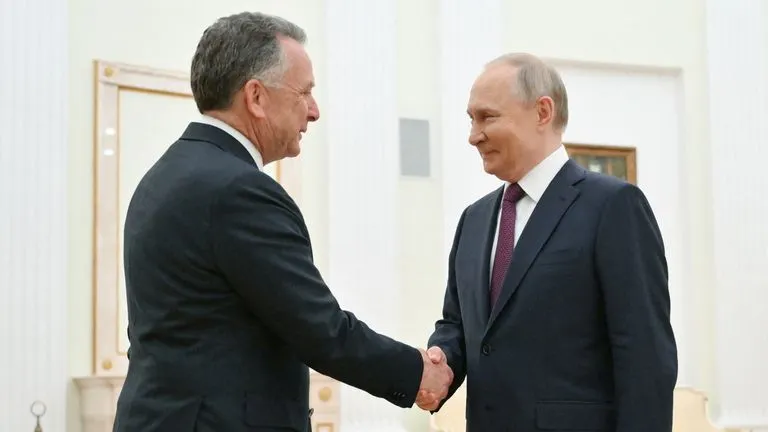
WASHINGTON, D.C. — May 9, 2025 — U.S. and Chinese trade officials are meeting in Geneva this weekend for preliminary discussions aimed at easing tensions between the world’s two largest economies. The talks follow months of escalating tariffs and retaliatory measures that have unsettled markets and strained supply chains.
The U.S. delegation, led by Treasury Secretary Scott Bessent and U.S. Trade Representative Jamieson Greer, will engage Chinese counterparts in what experts describe as “talks about talks,” with no immediate breakthroughs expected.
Tariff Escalation Pushes Both Sides to the Table
In recent months, the Biden administration has increased tariffs on Chinese goods to 145%, while Beijing responded with duties as high as 125% on U.S. exports. These moves mark a significant escalation in a trade war that has persisted—with interruptions—since 2018.
President Donald Trump defended the strategy, calling the tariffs “reciprocal,” and suggested on social media that further adjustments could follow. “80% tariff seems right! Up to Scott,” Trump posted on Truth Social.
China’s Ministry of Foreign Affairs criticized the U.S. approach, characterizing it as confrontational. “All bullies are just paper tigers,” a recent statement said, affirming that China would not back down under pressure.
No Clear Roadmap to De-escalation
Trade analysts say the Geneva meetings may serve more to assess intent than to finalize any new trade framework.
“There’s no shared roadmap or clear pathway to de-escalation,” said Craig Singleton of the Foundation for Defense of Democracies.
“China may simply be looking to buy time.”
Complicating matters, both sides disagree on who initiated the meeting. While Chinese officials say the U.S. requested the talks, Trump publicly disputed that claim.
Impact on Global Markets and U.S. Businesses
The ongoing tariff dispute has caused instability across industries and added pressure to supply chains. U.S. retailers have warned of product shortages and rising prices, while manufacturers report higher costs due to reliance on Chinese parts and materials.
According to the National Association of Manufacturers, nearly half of U.S. imports from China in 2023 were industrial supplies or components essential to American production.
“This was not very well planned,” said Zongyuan Zoe Liu of the Council on Foreign Relations, noting the lack of contingency planning in the tariff rollout.
China Adapts to Tariff Pressure
Beijing has worked to reduce reliance on the U.S. market. In 2023, the share of China’s exports to the U.S. dropped to 15%, down from more than 19% in 2018. Analysts say China is confident its economy can absorb the impact, even as it faces slowed growth.
Louise Loo of Oxford Economics noted that China may be better positioned to find new buyers than the U.S. is to find new suppliers.
Still, the International Monetary Fund recently downgraded China’s growth outlook, citing the toll of the trade war.
Consumers and Manufacturers Feel the Strain
U.S. companies warn that consumers may soon face rising prices and fewer choices. A recent case by Afina, a U.S. showerhead company, found that zero customers selected a more expensive American-made version when given the choice between it and a cheaper Chinese version.
Additionally, factories in both countries are feeling the pinch. China supplies over 90% of many low-cost goods Americans regularly use—ranging from umbrellas and coloring books to fireworks and baby strollers.
High Stakes, Uncertain Outcomes
The Geneva talks come amid growing concern from international observers. European Union officials and economists warn that without a clear resolution, global trade could face long-term disruptions.
“Both of them are highly dependent on bilateral trade,” said Jeff Moon, a former U.S. trade official. “They have put themselves in a corner.”
One European observer, Jens Eskelun of the EU Chamber of Commerce in China, summed up global hopes: “Lock them in a room and then hopefully white smoke will come out.”




